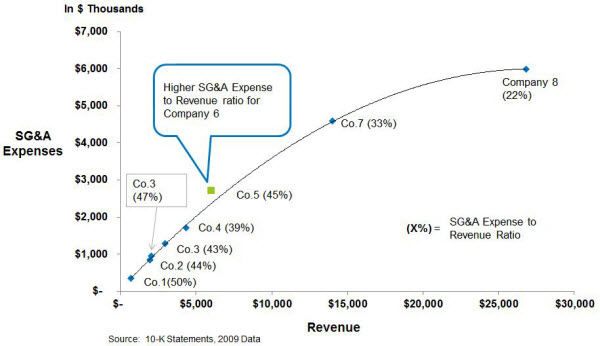Recently I was negotiating a consulting contract with a client and the client came up with the argument that our price should be lowered compared to a large consulting company they were employing at the same time, because as a very small company, our overheads (sales, general & administrative costs – SG&A) should be lower. I was convinced on the contrary that due to the lack of scale factor, they are in fact higher (as a % of revenue).
We did not conclude the argument before the end of the negotiation but that got me thinking. I did a bit of research and what I found is indeed that as a general rule, SG&A diminish as a percentage of revenue when the size of the company increases, due to economies of scale, such as for example in this study of software companies:

Would that also hold true of a very small company like my current company (2 employees)? My take is that it is certainly true even if is not necessarily clearly valued because I do spend a lot of my time on administrative and marketing stuff without being compensated for it (and without counting my hours). In addition, even in a time where it is easy and cheap to have the necessary infrastructure setup, the costs of using external contractors for such tasks as accounting, payroll etc is necessarily more expensive than having internal resources doing it internally – but the size does not justify a full time employee on these tasks yet.
It is thus clear that for very small companies, if it was fully valued, the percentage of SG&A effort is much higher than in even slightly larger companies, and much higher than very large companies even if they do use a small percentage of their revenue on activities such as research and studies.
In any case the debate was probably not relevant because what is important, is the going market rate for the services provided, amended by the value brought to the client organization, which needs always to be much higher than the cost of consultancy!
